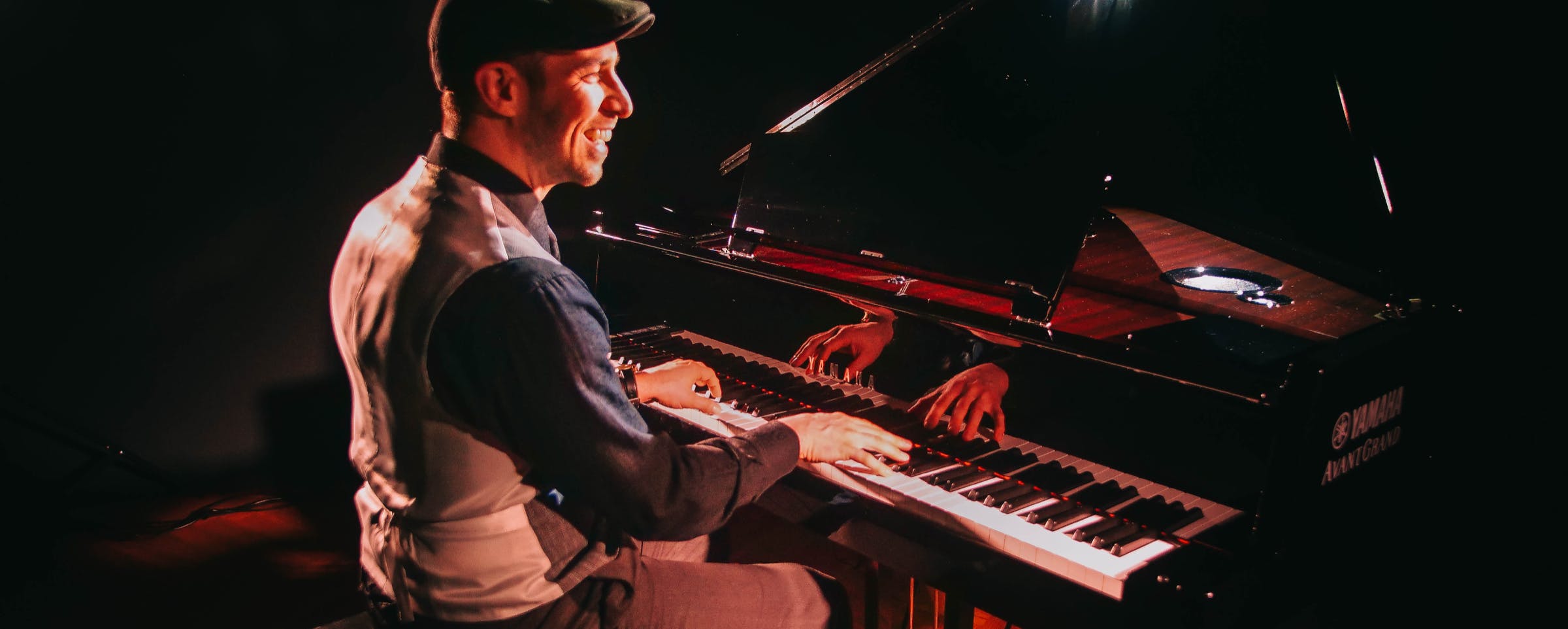Why Boogie-Woogie Will Make You a Better Pianist
It’s time to boogie! Find out how this feverish, foot-tapping style got its start, and how it can take your piano-playing to another level.
Last updated on 04 Mar. 2022
Boogie-woogie is coming back. At least, that’s what some people say. At flowkey, we think that it never went away. Boogie-woogie hasn’t just been around for over a hundred years because it works well with just a piano, or because it’s such an accessible form of blues. It’s lasted this long and had so much influence because the energy it creates never fails to do one thing. It makes you want to dance.
Origins
“Boogie” was born in the African American community of the United States in the late 19th Century. The word was originally another name for southern state “rent parties” people would throw to make extra money for rent. They would take guests’ donations and pay a cut to a pianist, who would get people dancing with uptempo, energetic blues. Soon, the word was associated with the music. And “woogie”? Well, it rhymes.
The style picked up popularity, and during the years of 1920-1945 blues pianists were something like the DJs of the time. A pianist could show up to a party, sit down at the piano and get everybody going wild. A dance style also called “boogie-woogie” soon emerged from partner dances like Lindy Hop and swing, but in reality you don’t need a partner. You can move however you like, as long as you have a smile on your face.
The boogie-woogie sound
Like much of the blues, boogie-woogie at its most basic is a 12-bar blues progression through three chords. Simple yet effective, it gives a lot of space to play around, adding swing, embellishments, and improvisation. But the truly characteristic boogie-woogie sound comes from the walking bass line. A note on every beat, following the chords.
If you listen to an energetic boogie by modern players like Johan Blohm you should get the idea. The style also lends itself to something a little slower, like Albert Ammons’s classic "Bear Den Boogie" (You can learn both of these on the flowkey app).
The influence of boogie-woogie is vast. You can hear it in the music of Ray Charles, Jerry Lee Lewis or Little Richard. See it in the key-thumping energy and extravagance of performers like Elton John, Liberace or Jools Holland. Many pianists like Dave Brubeck, known for pushing the boundaries of timing in Take Five, started here. Even ZZ Top have boogie-woogie origins if you look beyond the beards and guitars.
Should you learn a little boogie-woogie?
Boogie-woogie won’t just expand your playing in areas you hadn’t considered. It could improve the styles you always loved but never realized had origins there. Also, the 12-bar blues acts as a perfect point to start improvising using a pentatonic scale. This may feel like a distant dream, but you may well be surprised how quickly you pick it up.
Most importantly, you should learn a little boogie-woogie for the energy that it creates. It’s no surprise that it has lived on for over a hundred years in various forms. The rhythm and swing get people smiling and dancing. So go on. Get your left hand walking.
We are excited that we are partnering with the fantastic boogie-woogie pianist Arthur Migliazza, to help you get into boogie-woogie. Videos, tutorials, and interviews with Arthur are all available on the flowkey app or on our YouTube channel!
Read next
7 Proven Piano Practice Tips You Need to Know
If you want to practice piano more effectively, these tips will help you learn faster – and make your practice sessions more enjoyable too.
Why You Don't Need Natural Talent To Be A Great Piano Player
Don’t believe what people say about being naturally talented – this is why anyone can learn to become a great piano player.
11 Spooky Piano Tunes to Learn This Halloween
These chilling piano pieces will add the perfect eerie atmosphere to your Halloween night. Keep scrolling to discover them all—if you dare!
12 Classic Sad Piano Songs – And How to Play Them
When you're down, a sad piano piece is just the thing for capturing those feelings. Let your emotions flow with these slow, sorrowful songs.
